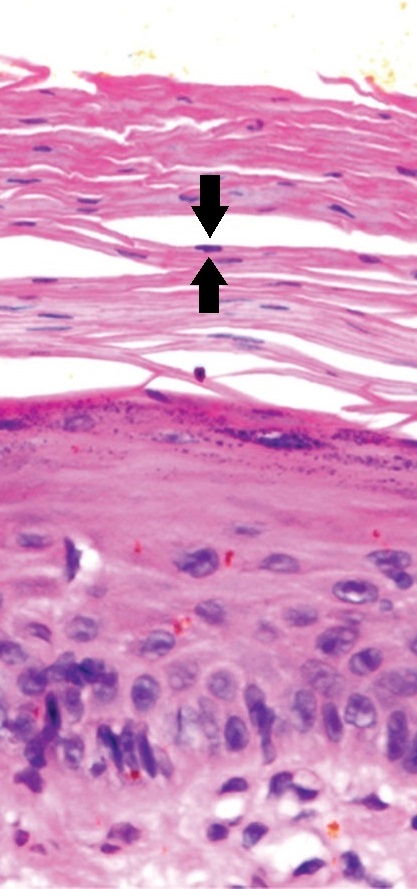Actinic keratosis (AK) is a precancerous skin lesion that affects sun-exposed areas. The condition presents as small, non-tender macules/papules with a characteristic sandpaper-like texture that can become erythematous scaly plaques. Actinic keratosis is usually diagnosed clinically, but suspicious features warrant a biopsy to rule out invasive squamous cell carcinoma. The majority of AK lesions remain non-malignant, but it is difficult to distinguish those that will resolve from those that will become cancerous. Actinic keratosis has multiple types of treatment, including cryotherapy, shave removal, excision, topical medications, and photodynamic therapy. Lesions with features that are suggestive of cancer warrant removal and pathologic evaluation.
Last updated: Mar 4, 2024

Large actinic keratoses on the nose.
Image: “Large AKs on the nose of a participant in the colchicine group” by Advances in Medicine. License: CC BY 4.0, edited by Lecturio.
Patient with albinism showing actinic keratoses lesions over the chest.
Image: “Albino showing actinic keratoses lesions over the chest” by Ramalingam VS, Sinnakirouchenan R, Thappa DM – Indian journal of dermatology (2009). License: CC BY 2.0.
Actinic keratosis on the lip (actinic cheilitis) with a cutaneous horn.
Image: “Actinic keratosis on the lip ” by Eray Copcu1, Nazan Sivrioglu1m and Nil Culhaci. License: Public DomainDiagnosis is usually made clinically by inspection Inspection Dermatologic Examination and palpation Palpation Application of fingers with light pressure to the surface of the body to determine consistency of parts beneath in physical diagnosis; includes palpation for determining the outlines of organs. Dermatologic Examination (rough, sandpaper-like texture Texture Dermatologic Examination). Additionally, clinicians may employ:[3,4,7,8]

Actinic keratosis with atypical keratinocytes confined to the lower 3rd of the epidermis. There is parakeratosis, as indicated by black arrows pointing to 1 of the multiple retained nuclei in the stratum corneum.
Image: “Example of an early actinic keratosis with keratinocyte dysplasia confined to the lower third of the epidermis” by Mikael Häggström, M.D.. License: CC BY 4.0
Example of an early actinic keratosis with keratinocyte dysplasia confined to the lower 3rd of the epidermis.
Image: “Micrograph of early actinic keratosis” by Valerie R. Yanofsky, Stephen E.Mercer, and Robert G. Phelps. License: CC BY 4.0Management may vary depending on practice location. The following information is primarily from US and UK clinical guidelines. Choice of therapy may be determined by the number of lesions, location, patient comfort and preference, clinician Clinician A physician, nurse practitioner, physician assistant, or another health professional who is directly involved in patient care and has a professional relationship with patients. Clinician–Patient Relationship experience, and availability.
Prevention consists of the use of sunscreen Sunscreen Chemical or physical agents that protect the skin from sunburn and erythema by absorbing or blocking ultraviolet radiation. Melanoma and sun protection.
Single or a few discrete lesions (lesion-directed therapy):[5,7,8]
Multiple lesions/ field cancerization Field Cancerization Actinic Keratosis (field-directed therapy):[5‒8]